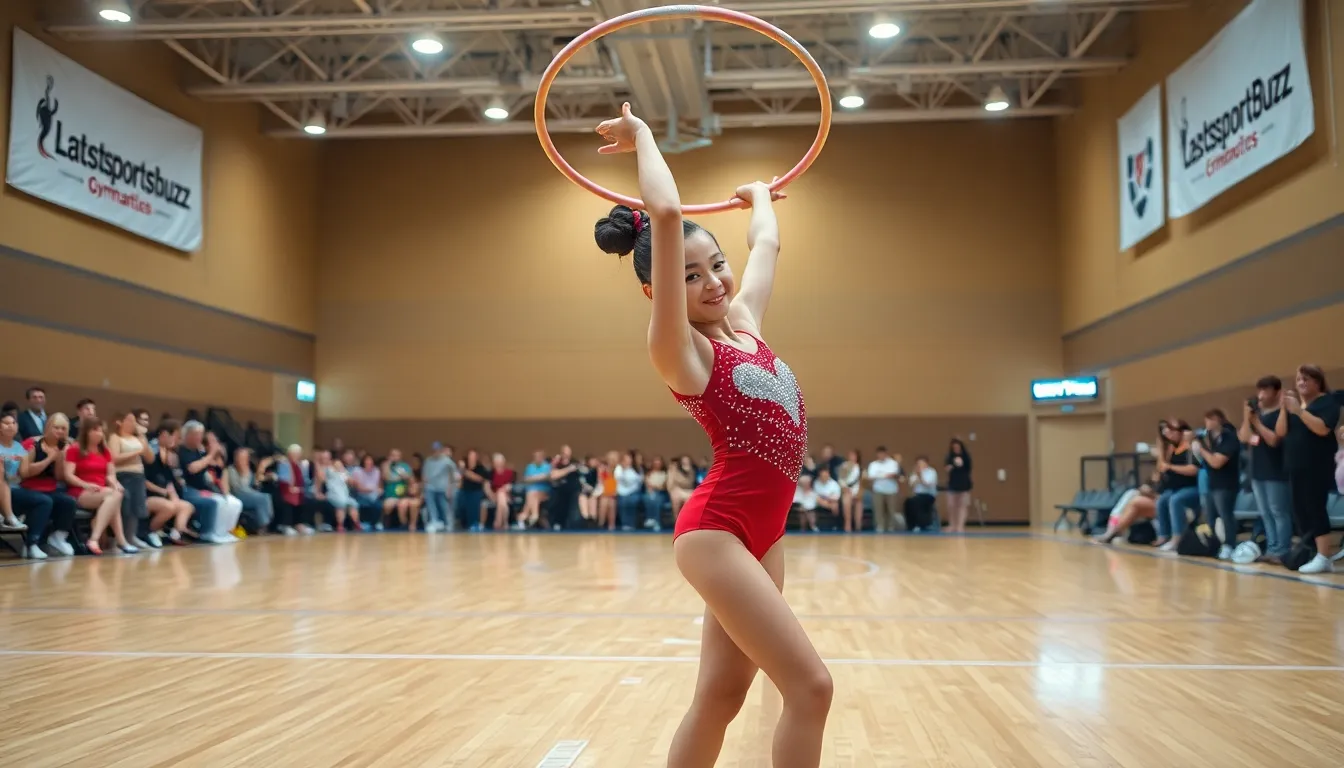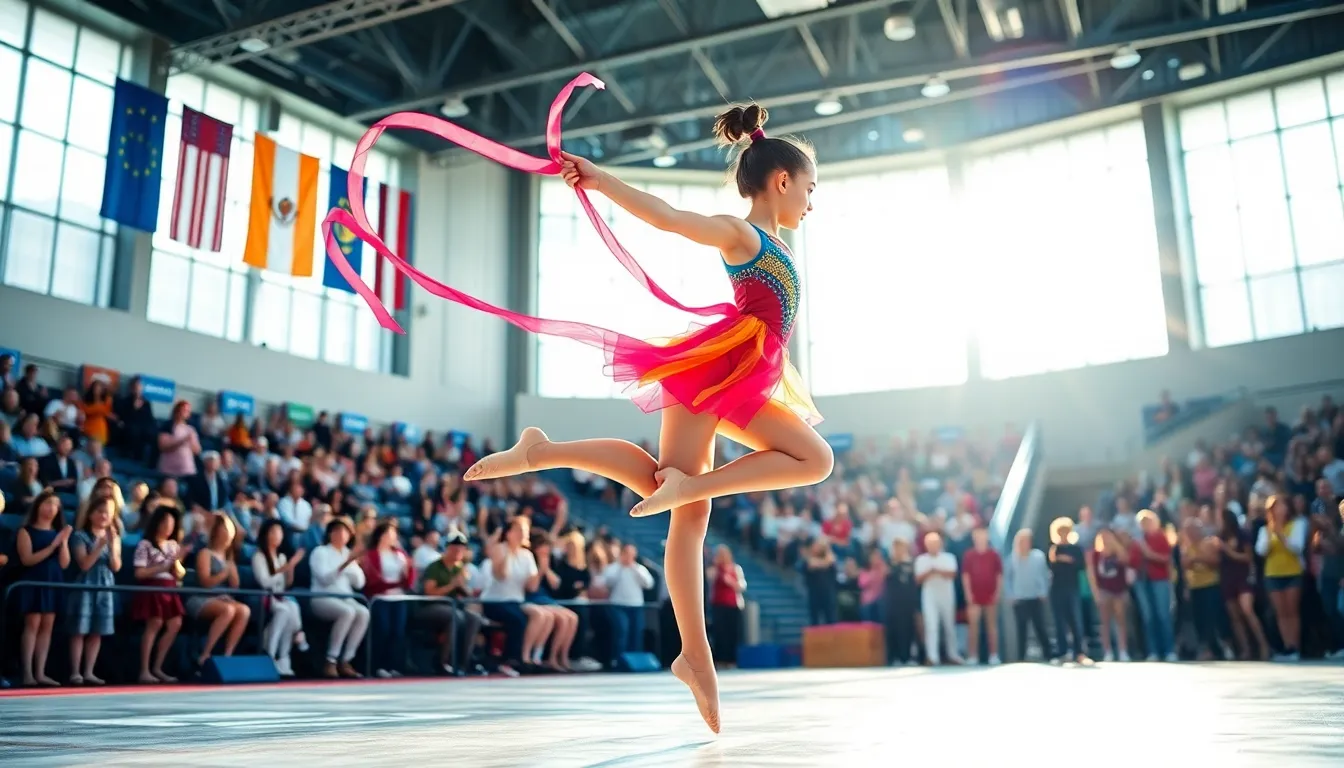Table of Contents
ToggleAs rhythmic gymnastics captivates audiences with its blend of artistry and athleticism, it remains an evolving sport with a rich history and an increasingly global presence. This article delves into the latest developments in rhythmic gymnastics, including its origins, essential elements, scoring criteria, recent competitions, and upcoming trends that enthusiasts should keep an eye on.
Overview of Rhythmic Gymnastics

Rhythmic gymnastics is a unique sport that combines elements of ballet, gymnastics, dance, and acrobatics. Competitors perform on a floor with apparatuses including ribbons, hoops, balls, clubs, and ropes, showcasing their agility, flexibility, and artistic expression.
History and Evolution of the Sport
The sport has its roots in the early 20th century, evolving significantly since its inception. Rhythmic gymnastics was first introduced as a competitive sport in the 1940s in the Soviet Union, where it garnered popularity for its emphasis on graceful movements. It made its Olympic debut in 1984, and since then, it has grown in technical complexity and international participation, now being governed by the International Gymnastics Federation (FIG). The sport has seen increasing diversity as countries from all over the world begin to develop their rhythmic gymnastics programs.
Key Elements of Rhythmic Gymnastics
The beauty of rhythmic gymnastics lies not only in the athletic prowess displayed but also in the combination of movements and the sophistication of techniques used by athletes.
Techniques and Equipment Used
Athletes perform a series of choreographed routines, integrating various apparatus that each requires specific skills. The ribbon, for instance, demands fluidity and precision, while clubs necessitate strong coordination. Routines typically last between 1.5 to 2.5 minutes, and they must exhibit a balance between technical execution and artistic presentation. Gymnasts train intensively to master elements such as leaps, turns, pivots, and balances, all while incorporating their apparatus seamlessly into the routine.
Scoring System and Judging Criteria
The scoring system in rhythmic gymnastics is intricate, reflecting both the technical execution and aesthetic appeal of performances. Judges assess gymnasts based on several criteria, including difficulty, execution, and artistry.
The new scoring system implemented in recent years includes two panels of judges: one evaluates the content and the other focuses on execution. This dual approach ensures that both the complexity of the routine and the gymnasts’ performance quality are taken into account. Points may be deducted for errors in technique or artistic inconsistency, making precision and creativity equally vital.
Recent Major Competitions and Results
The rhythmic gymnastics landscape continues to be vibrant, with numerous competitions highlighting top talents from around the globe. Recent events such as the World Rhythmic Gymnastics Championships and various Grand Prix series have been pivotal for athletes seeking to make their mark.
Profiles of Top Athletes
Athletes like Dina Averina and Linoy Ashram have dominated recent competitions, showcasing their extraordinary skills and captivating performances. Averina, from Russia, has reigned supreme with multiple titles, demonstrating unparalleled technique and artistry. Meanwhile, Israel’s Ashram has proven herself as a formidable competitor, recently winning gold at the Tokyo 2020 Olympics. Their achievements not only set high benchmarks for future athletes but also raise the profile of rhythmic gymnastics on an international stage.
Upcoming Events and Trends in Rhythmic Gymnastics
As the sport continues to evolve, several upcoming events are set to highlight the growth and popularity of rhythmic gymnastics. The 2023 World Championships are approaching, providing a platform for emerging talents while showcasing seasoned athletes. Also, there is a noticeable trend toward incorporating contemporary music into routines, enhancing the artistic aspects of performances.
Also, with the increasing presence of rhythmic gymnastics in media and social platforms, more young athletes are aspiring to enter the sport, seeing its artistic allure and competitiveness.
Conclusion
Rhythmic gymnastics is more than just a sport: it represents the intersection of athleticism and art, captivating audiences around the world. With its rich history, evolving techniques, and an exciting competitive landscape, the future of rhythmic gymnastics looks promising. As new talents emerge and existing stars continue to shine, the sport is poised for even greater recognition and success.






